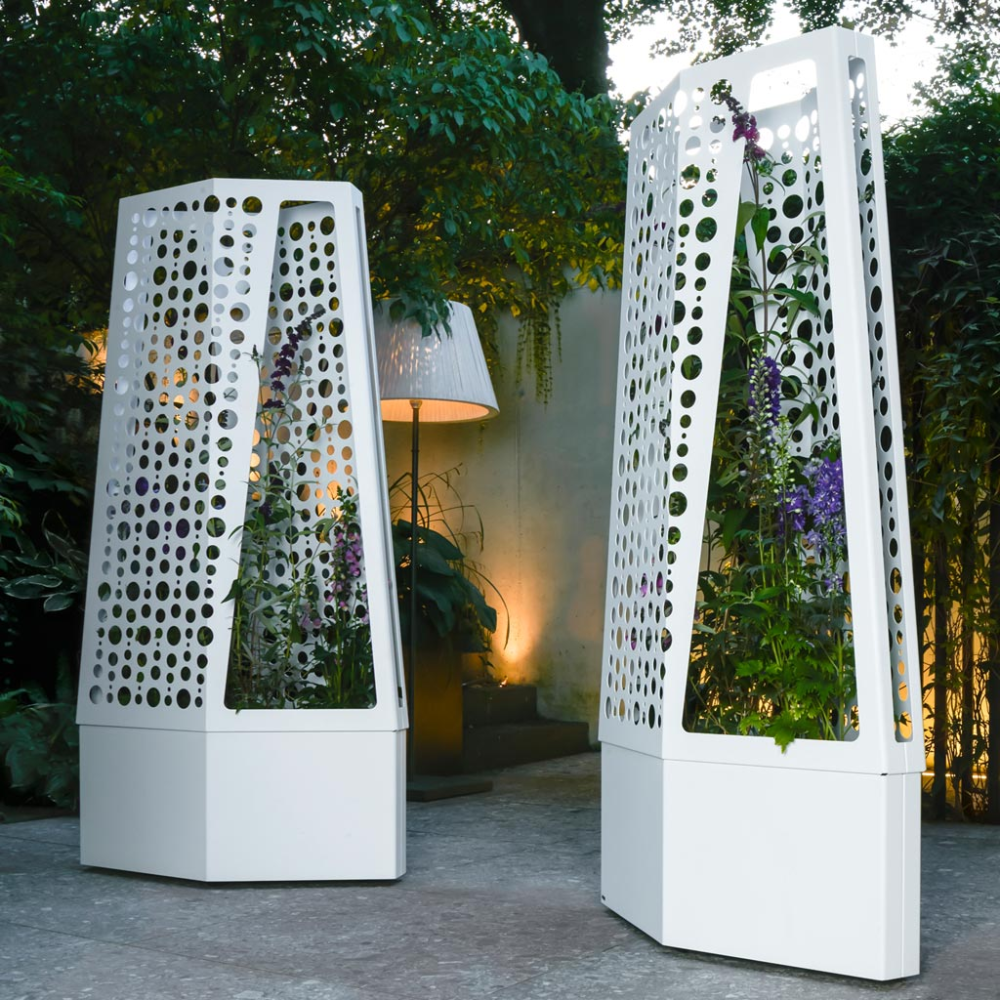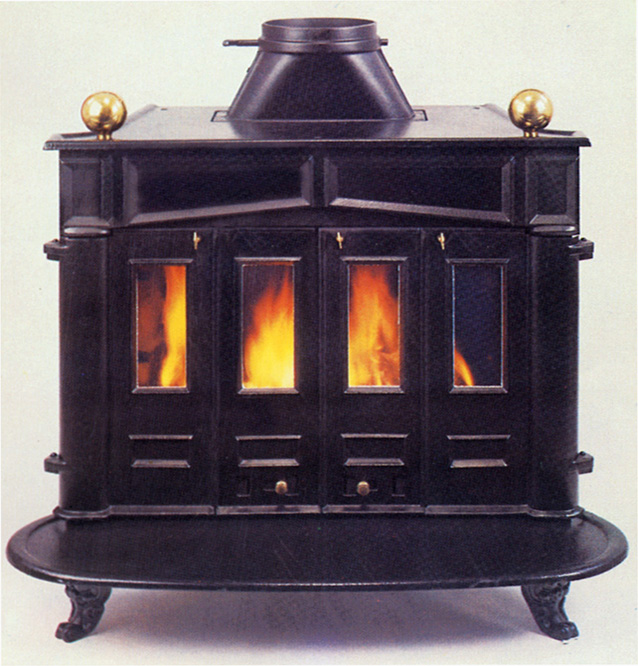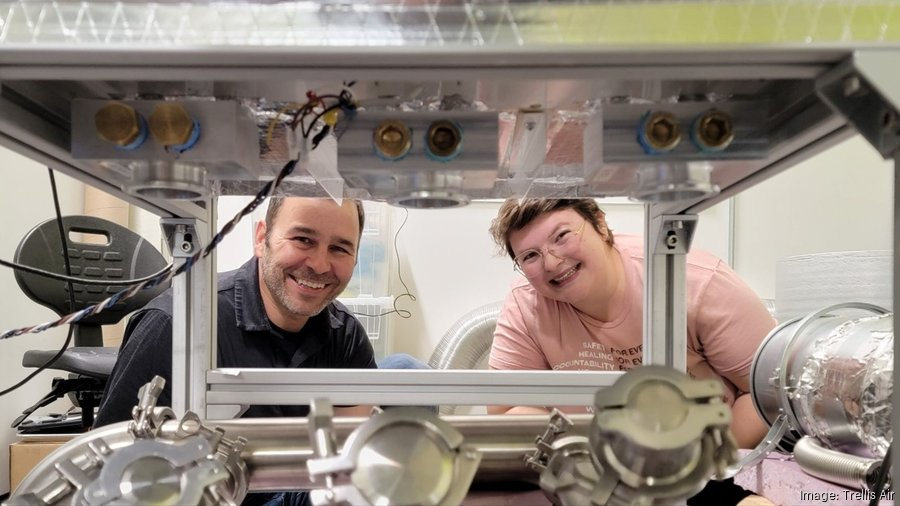Trellis Air, an innovative Harvard startup, is at the forefront of addressing the growing need for effective climate change solutions in the face of escalating global temperatures. As traditional air conditioning contributes to approximately 4% of greenhouse gas emissions, Trellis Air’s groundbreaking approach utilizes a unique membrane technology to provide energy-efficient air conditioning and advanced dehumidification systems. This revolutionary system, reminiscent of a coffee filter, enhances the cooling process while significantly reducing energy consumption. By reimagining conventional cooling methods, Trellis Air stands to transform the HVAC industry and combat the surging demand for sustainable cooling solutions. With experts from across various fields collaborating in its development, Trellis Air positions itself as a leading player in the quest for a greener future.
Trellis Air embodies a pioneering initiative emerging from Harvard’s innovation ecosystem, aimed at tackling the urgent challenge of increasing energy demands for cooling in a warming world. This forward-thinking venture leverages state-of-the-art membrane technology, offering a fresh perspective on air conditioning and moisture removal strategies that prioritizes environmental sustainability. By reengineering traditional cooling solutions, Trellis Air promises not only to enhance energy efficiency but also to offer practical climate change adaptation approaches. The startup’s unique methods of air management make it a candidate for revolutionizing how we think about comfort and efficiency in our living and working spaces. With a focus on modern, scientifically-backed solutions, Trellis Air provides hope for a more sustainable and energy-conscious future.
The Need for Innovative Cooling Technology
As global temperatures continue to rise due to climate change, the pressing demand for effective cooling solutions has never been more critical. Currently, air conditioning systems are responsible for nearly 4% of the world’s greenhouse gas emissions, a figure that highlights the urgent need for innovation in the HVAC (heating, ventilation, and air conditioning) industry. With projections indicating a 40% increase in cooling demand by 2030, there is an imminent risk of soaring energy consumption that could exacerbate climate issues. Innovative cooling technology that prioritizes energy efficiency not only promises to tackle these problems but also serves as a vital necessity for sustainable living in hot climates.
The significant challenge posed by rising emissions from cooling systems necessitates a major technological shift. Traditional air conditioning relies heavily on vapor-compression technology, which has remained largely unchanged for over a century. This stagnation presents an opportunity for startups like Trellis Air, whose innovative cooling technology is designed to drastically reduce energy consumption while effectively managing indoor humidity levels. By leveraging cutting-edge developments in dehumidification and moisture control, these new systems represent a potential solution to an increasingly concerning environmental crisis.
Trellis Air: A Harvard Startup Revolutionizing Cooling
Trellis Air, born from innovative research at Harvard, embodies the future of environmentally friendly cooling solutions. The company’s pioneering membrane technology works uniquely to extract moisture from the air, creating a more energy-efficient air conditioning process, akin to using a coffee filter for air. This groundbreaking approach aims to deliver superior cooling while minimizing energy use, thus contributing to a significant reduction in greenhouse emissions associated with traditional cooling methods. As a startup, Trellis Air is not only poised to disrupt the HVAC industry but also to set a new standard in sustainable cooling practices.
Led by CEO Russ Wilcox, Trellis Air’s innovative cooling technology emerges in a context where efficiency is paramount. With the potential for its membranes to serve as a ‘pre-drying module’ for existing air conditioning units, Trellis Air stands at the forefront of a major market opportunity. This transformative approach signifies a move away from reliance on heavily polluting refrigerants, towards more sustainable solutions that enhance energy efficiency. The vision for Trellis Air aligns with global efforts to combat climate change, proving that innovation in cooling technology can yield both effective and eco-friendly results.
Energy-Efficient Air Conditioning: A Sustainable Future
The transition to energy-efficient air conditioning is not just beneficial for individual consumers; it also represents a crucial step towards a sustainable future. As the demand for cooling solutions grows, the traditional methods that contribute to high energy consumption and greenhouse gas emissions become increasingly untenable. Energy-efficient air conditioning systems, such as those being developed by Trellis Air, offer a path forward by integrating advanced technologies that optimize cooling performance while minimizing energy use. These innovative systems are essential in the fight against climate change, as they promise to reduce the carbon footprint associated with indoor climate control.
Moreover, energy-efficient air conditioning can also lead to long-term cost savings for homeowners and businesses alike. By consuming less energy, these systems can significantly lower electricity bills, making them not just an environmentally responsible choice but a financially wise one as well. In a world where climate change solutions are paramount, embracing energy-efficient alternatives is not merely an option but a necessity. Companies like Trellis Air are on the cutting edge of this movement, showcasing innovations that can transform the way we cool our spaces while preserving the environment.
Combating Climate Change with Dehumidification Systems
Dehumidification systems play a critical role in managing indoor air quality and comfort, especially as climate change results in increased humidity levels in many regions. Conventional dehumidifiers, however, often consume substantial amounts of energy, leading to higher electricity costs and increased greenhouse gas emissions. The innovative technology developed by Trellis Air addresses these concerns by utilizing a unique membrane that separates water vapor from air without the heavy energy costs typically associated with traditional methods. This advancement poses significant potential for reducing energy usage while enhancing indoor climate control.
Incorporating energy-efficient dehumidification systems into existing infrastructures could offer a dual benefit: effective moisture control while significantly lowering the carbon footprint. Trellis Air’s approach is not only more efficient but also more reliable than traditional systems that rely on desiccants. This innovative method is a prime example of how advancements in dehumidification can coincide with broader climate change solutions, as effective moisture management is crucial for improving indoor air quality amid rising temperatures and humidity levels.
Innovative Solutions from a Harvard Incubator
Harvard’s commitment to fostering innovative solutions is exemplified by the launch of startups like Trellis Air. This venture represents not just an academic effort, but a practical application of research aimed at solving real-world problems, specifically the need for innovative cooling technology. Supported by various university departments and research institutes, Trellis Air’s development process intertwines cutting-edge science with entrepreneurial spirit, positioning it uniquely within the growing green technology market. Harnessing advancements in materials science, the startup delivers a product that promises to redefine cooling systems globally.
The commercialization of Trellis Air’s innovative cooling technology emphasizes the important connection between academia and industry. With the backing of Harvard’s Office of Technology Development and government grants, the transition from laboratory research to market-ready products reflects a broader trend where educational institutions leverage their research capabilities to address pressing environmental challenges. This model not only benefits the startup and its targets but also enhances public awareness about sustainable solutions and the importance of technological innovation in the battle against climate change.
The Role of Startups in Developing Climate Change Solutions
Startups play a vital role in implementing climate change solutions, proving essential to offering fresh, innovative ideas and approaches to longstanding problems. With traditional industries often slow to adapt to new technologies, startups like Trellis Air disrupt the status quo by introducing advanced solutions that have the potential to revolutionize energy consumption in the air conditioning sector. Their agility allows them to pivot quickly in response to emerging challenges, such as increasing cooling demands due to climate change, enabling them to develop tailored technologies that can meet contemporary needs.
Moreover, Trellis Air’s focus on innovative cooling technology reflects a growing trend among startups to prioritize sustainability in their business models. This commitment not only addresses the pressing issue of rising greenhouse gas emissions but also aligns with shifting consumer preferences towards environmentally friendly products. As awareness of climate change solutions continues to grow, startups are uniquely positioned to capitalize on emerging market demands, paving the way for sustainable products that can significantly reduce energy consumption across various industries.
Commercialization Paths for Innovative Cooling Technologies
The path to commercialization for innovative cooling technologies is fraught with both challenges and opportunities. For Trellis Air, CEO Russ Wilcox envisions multiple avenues through which their groundbreaking membrane technology can be introduced to the market. By targeting industrial applications, replacing existing dehumidifiers, and enhancing traditional air conditioning systems, Trellis Air aims to establish its innovative cooling solutions in various sectors. Each pathway presents a unique set of challenges but also the potential for significant rewards as the demand for energy-efficient products rises.
Additionally, ensuring that these technologies are scalable and practical for wider adoption is critical. Trellis Air has been rigorous in its prototyping and testing phases, showcasing its commitment to demonstrating the technology’s viability in real-world scenarios. This thorough validation process is essential not only for gaining investor confidence but also for convincing stakeholders of the practicality and economic advantages of adopting energy-efficient cooling systems, thereby facilitating a smooth transition from innovative concept to widely utilized solution.
Prototyping: Bridging the Gap Between Innovation and Application
Prototyping is a crucial step in the journey from cutting-edge theoretical advancements to practical deployment in everyday applications. For Trellis Air, the development of a functional prototype has involved extensive collaboration among researchers, engineers, and business strategists. The thorough research and development process that the team has undertaken ensures that their unique membrane technology is both effective and reliable under various conditions, a vital factor for any new product seeking entrance into a competitive market.
Through rigorous testing in diverse environments—such as the humid conditions in Miami and Harvard’s HouseZero—Trellis Air has successfully demonstrated its technology’s effectiveness and reliability. These real-world pilots serve not only to refine the product further but also to provide concrete data that can aid in securing funding and partnerships necessary for scaling the technology. Such prototyping efforts exemplify how innovative startups can bridge the gap between theoretical research and real-world application, ultimately contributing to advancements in climate-efficient technologies.
The Future of Sustainable Cooling Solutions
The future of sustainable cooling solutions is increasingly bright, thanks to innovative companies like Trellis Air. As society becomes ever more aware of the impacts of climate change, the demand for efficient and environmentally friendly technologies is likely to grow exponentially. Trellis Air’s commitment to reducing energy consumption and greenhouse gas emissions shows how innovation can provide effective and viable solutions to critical problems. This pathway towards sustainability not only benefits consumers but also contributes positively to the planet’s health.
As we look ahead, the role of startups in fostering breakthroughs in circuitous sectors like air conditioning will be paramount. The ability to adapt, innovate, and implement fresh ideas swiftly is a significant advantage for companies like Trellis Air. By incorporating novel methods and materials into their systems, they ensure that the HVAC industry can transition away from outdated technologies towards more sustainable, energy-efficient alternatives. Collectively, these innovations represent a promising shift towards a more sustainable future, one where cooling technology operates in harmony with the environment.
Frequently Asked Questions
What is Trellis Air and how does it contribute to innovative cooling technology?
Trellis Air is a Harvard startup that has developed an innovative cooling technology designed to reduce the energy required for air conditioning. Utilizing a unique membrane system, Trellis Air efficiently dehumidifies air, akin to a coffee filter, allowing for cooler, drier air to be produced with significantly lower energy consumption compared to traditional air conditioning systems.
How does Trellis Air’s energy-efficient air conditioning system work?
Trellis Air’s energy-efficient air conditioning system works by using a specially designed membrane that separates water vapor from the air. This process requires less energy than conventional methods, which often rely on refrigerants and larger dehumidification systems, resulting in substantial energy savings and a reduced environmental impact.
Can Trellis Air be considered a climate change solution?
Yes, Trellis Air is considered a climate change solution as it addresses the energy demands and greenhouse gas emissions associated with traditional air conditioning systems. By using innovative cooling technology, it aims to decrease the carbon footprint of cooling buildings and battle the rising energy demands projected due to climate change.
What are the benefits of Trellis Air’s dehumidification systems compared to traditional models?
Trellis Air’s dehumidification systems offer numerous benefits over traditional models, including enhanced energy efficiency, reduced reliance on refrigerants, and lower overall energy consumption. This innovative approach not only minimizes operational costs but also helps in curbing the emissions linked to standard air conditioning practices.
How does Trellis Air plan to revolutionize the air conditioning industry?
Trellis Air plans to revolutionize the air conditioning industry by integrating its innovative cooling technology as a ‘pre-drying module’ for existing air conditioning units. This integration aims to enhance the efficiency of AC systems globally while offering a viable alternative to conventional cooling and dehumidification methods, thus tackling the upcoming surge in cooling demand.
What role did Harvard play in the development of Trellis Air’s technology?
Harvard played a crucial role in the development of Trellis Air’s technology by providing foundational research and resources through collaborations across various departments. The university’s scientists designed the membrane and conducted research that enabled the commercialization of this innovative cooling technology, which is intended to address key challenges in energy-efficient air conditioning.
Why is Trellis Air a significant innovation in the fight against climate change?
Trellis Air represents a significant innovation in the fight against climate change because it provides a sustainable alternative to traditional, energy-intensive cooling methods, which contribute heavily to global greenhouse gas emissions. By offering an advanced dehumidification system that operates more efficiently, Trellis Air has the potential to lower energy use and emissions, even as the demand for cooling rises.
What is the future outlook for Trellis Air and its innovative cooling solutions?
The future outlook for Trellis Air and its innovative cooling solutions is promising, as it provides a strategic response to the increasing demand for cooling systems amid climate change. With ongoing prototyping, real-world testing, and plans for commercialization, Trellis Air aims to establish itself as a leader in energy-efficient air conditioning, thereby significantly impacting both the industry and the environment.
| Key Points |
|---|
| Researcher Peteris Lazovskis highlights Trellis Air’s breakthrough technology in energy-efficient cooling, designed to reduce greenhouse gas emissions. |
| Trellis Air offers a novel method of cooling and dehumidification that functions similar to a coffee filter, using advanced membranes to minimize energy consumption compared to traditional systems. |
| As demand for cooling rises due to climate change, Trellis Air has the potential to significantly lower energy usage from air conditioning, which currently accounts for 4% of global greenhouse gas emissions. |
| The company, formed through collaborative research at Harvard, is developing products that could disrupt long-standing air conditioning techniques established over the past century. |
| With a focus on scalability and robust materials, Trellis Air aims to improve upon previous membrane dehumidification systems that failed to achieve high efficiency and reliability. |
| CEO Russ Wilcox envisions integrating Trellis Air’s technology with existing air conditioners globally to create a “pre-drying module” that increases efficiency dramatically. |
| Recent pilot studies in Miami and Harvard’s HouseZero have demonstrated the effectiveness of Trellis Air’s technology in real-world conditions, paving the way for commercial use. |
| Supported by significant funding from various institutions, Trellis Air is poised to transform cooling technology while addressing critical climate challenges. |
Summary
Trellis Air is leading the charge in revolutionary cooling technology that addresses rising global temperatures and increasing demand for air conditioning. With its innovative membrane system designed to efficiently extract moisture from air, Trellis Air promises to drastically reduce energy consumption and greenhouse gas emissions associated with traditional cooling systems. This initiative not only represents a significant leap toward sustainable cooling solutions but also holds the potential to reshape the future of air conditioning on a global scale.



